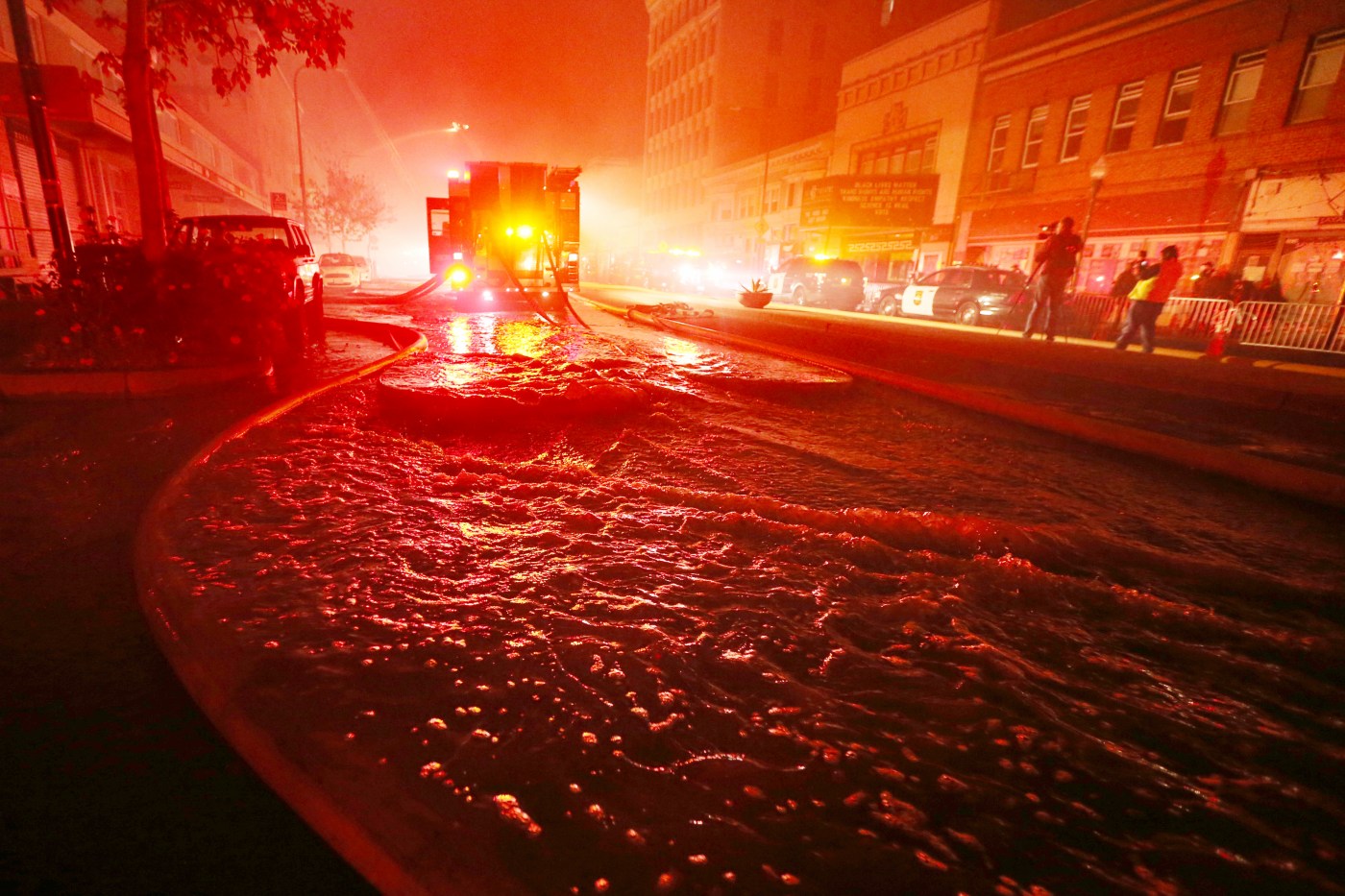
BERKELEY — Road safety is often a major priority for cities but a new report on emergency evacuation times in Berkeley underscores the trade-offs that exist between calming day-to-day traffic and quickly moving people out of a dangerous area.
The report, developed by KLD Associates on behalf of the city, evaluated evacuation patterns and exit hurdles during wildfires and tsunamis and found that city-wide evacuation times can vary from 2 hours and 30 minutes to nearly 4 hours, depending on time of day and day of the week.
Related Articles
Moss Landing fire: Vistra and EPA reach battery cleanup agreement
87% of Californians are concerned home insurance will rise due to climate change
Butler Fire map: Forecast of dry lightning prompts warnings of more evacuations
Map: Butler Fire grows by 40% over weekend, more evacuations in Siskiyou County
5 dead in collision that sparks California brush fire
Evacuation times also varied when broken down by regions in the city. For instance, evacuating West Berkeley past 7th Street during a tsunami would take between 1 hour and 50 minutes to 2 hours and 15 minutes.
Meanwhile, moving people out of the hills during a wildfire similar to the 1923 Berkeley Hills fire which claimed 640 structures, could take between 1 hour and 35 minutes to 4 hours and 10 minutes.
Ultimately, the report found that even the largest streets in Berkeley, home to about 117,000 residents, aren’t equipped to handle a large-scale evacuations.
Traffic calming measures like speed humps and tables, traffic circles, four-way-stops and raised intersections, which are important daily traffic management tools, hinder evacuation times, particularly south and west of the University of California, Berkeley, campus, north of Ohlone Park and around the Lawrence Berkeley National Laboratory, the report found.
“The impact of Traffic Calming Devices (TCDs) on evacuation illustrates the complexity of the public safety demands on Berkeley’s roadway system,” read the report. “The day-to-day public safety function of TCDs poses significant challenges to evacuation traffic flow. This situation illustrates the dynamic and complex public safety demands on Berkeley’s roadway system.”
Some delays from traffic calming devices could be alleviated by installing retractable versions of those features and transitioning intersections to actuated or adaptive signal lights, according to the report. Upgrading traffic signal software including adding priority for public transit vehicles, deploying smart traffic cameras that can monitor real-time traffic issues and strengthening communication infrastructure was also recommended.
The report also recommended the city develop a connectivity and evacuation capacity improvement strategy and methods for evaluating evacuation times when pursuing future road infrastructure projects.
Implementing parking restrictions in the Berkeley Hills was also recommended to help improve emergency response times. The report also flagged concerns over how additional development of middle housing, accessory dwelling units and junior accessory dwelling units could exacerbate evacuation times in the hills.
Mayor Adena Ishii said she was glad the city decided to prohibit middle housing development in the Berkeley Hills under the city’s new Middle Housing Ordinance, given that the report showed quickly evacuating current residents will already be difficult.
“Once we do some more analysis, we’ll have a better idea of how this will impact our approach. I have faith that our fire department and transportation department will work well together to keep our city safe,” Ishii said in a text Friday regarding other report recommendations.
In a July 15 press release announcing the report, Berkeley officials also encouraged residents to plan for evacuations ahead of time by becoming more familiar with city roads and identifying where they’ll go, avoiding having to make that decision in the moment. Help developing or improving evacuation plans will be provided during city-sponsored Household Fire Weather Planning and Family Emergency Preparedness workshops.
Evacuating as soon as possible is key, especially for residents in the hills when extreme fire weather is announced by the Berkeley Fire Department. People are also encouraged to sign up for alerts through AC Alert, a county notification system used by the city to communicate with the public during emergencies. Downloading the Genasys Protect app, which provides real-time emergency evacuation mapping, is also recommended.
“Knowing you need to evacuate is the first step. Make sure you are ready to receive alerts,” the city said in the press release.
Carpooling could also help evacuation times by reducing the number of cars on the road. People are encouraged to ask their neighbors for help, especially if they don’t own a car.
How those evacuating on foot or bike would impact existing vehicular traffic was not specifically studied. Nor was the impact on traffic from incoming emergency vehicles.
Still, the report asserts that some people on the Bayfront should consider cycling or walking when evacuating during a tsunami, given that warning times are often hours ahead and the impact zone typically has a specific geographic boundary of which people can get outside.
As for wildfires, complications exist regardless of what means of evacuation someone chooses. Slow vehicle traffic can be avoided on a bike or foot, but those in cars would be more protected from the heat and other hazardous conditions. Those on bikes or foot would be less protected during a collision as well and deadly crashes could force emergency personnel to divert attention away from responding to the emergency.
According to city-provided data, a vast majority of people plan to evacuate by car, at 96.6% citywide, while 2.2% plan to evacuate on foot and 1.4% on bike. Foot and bike evacuations drop to 1.5% and 0.5% respectively when focused on just those living in the hills, which the report concludes is because streets there are windy, narrow and vary in elevation.
“Ultimately, the decisions about when and how to evacuate belong to individuals, who will decide based on their own risk tolerance,” read the report. “All evacuations involve potential for injury or death, if only from collisions and crashes.”